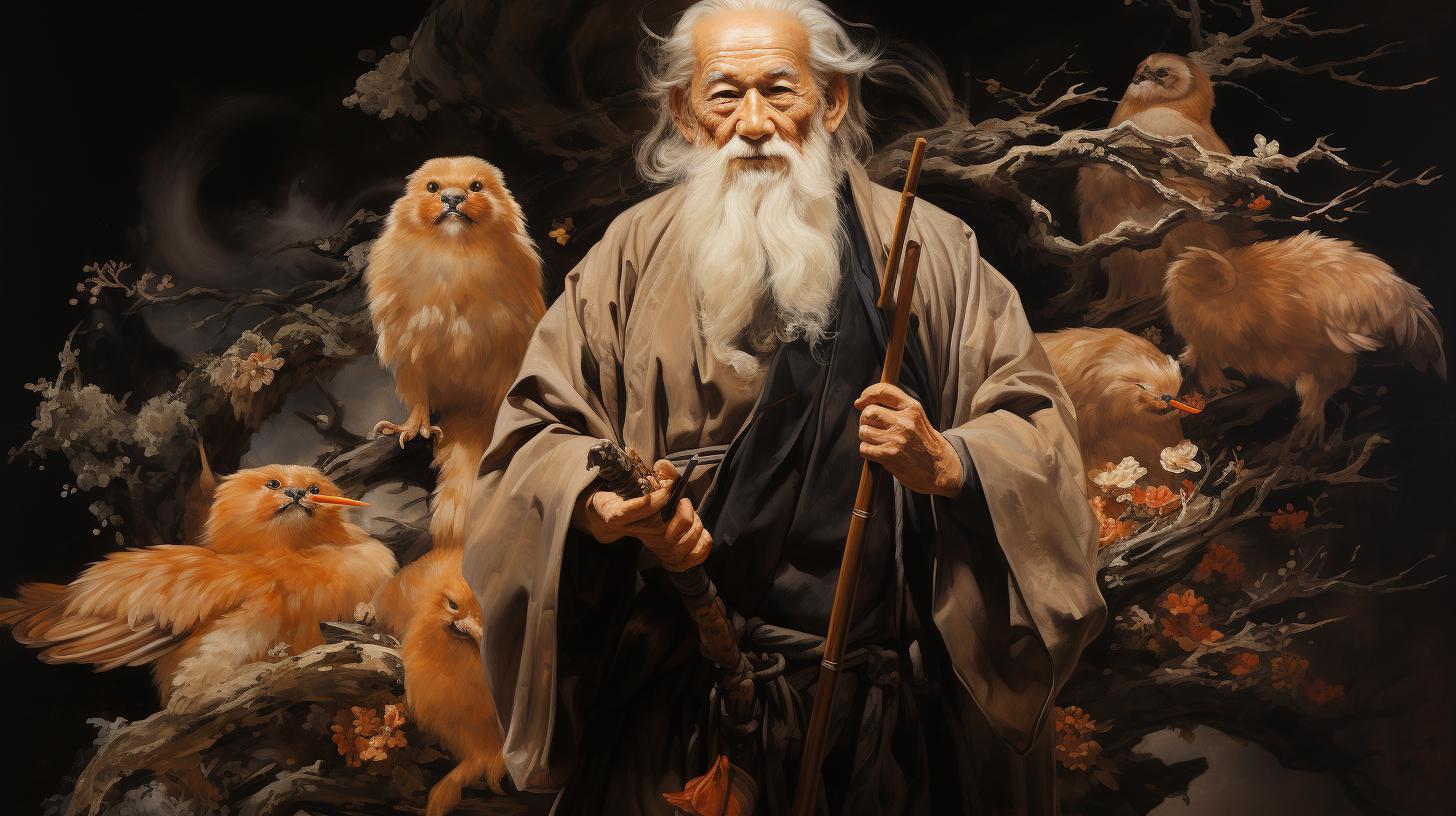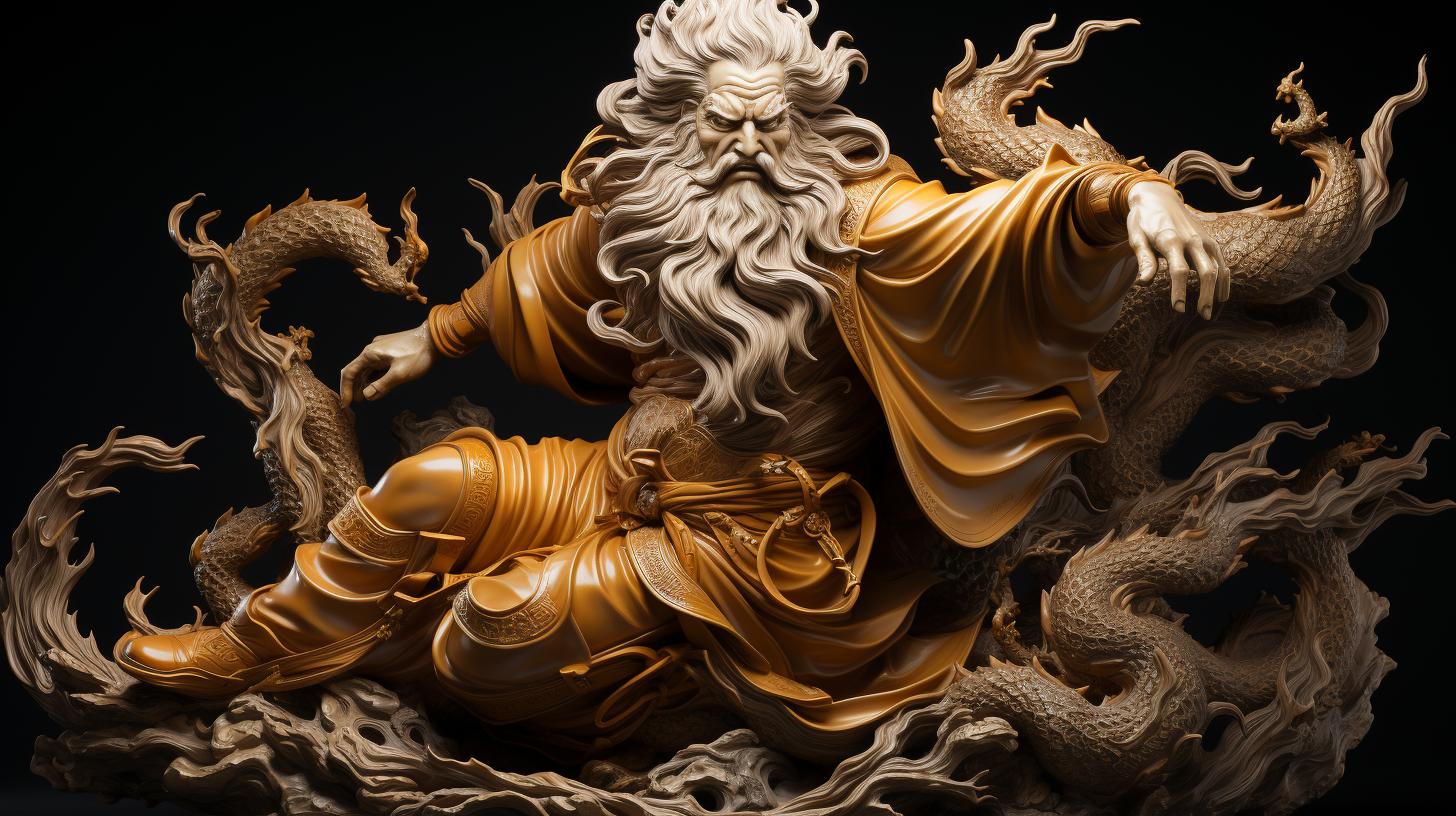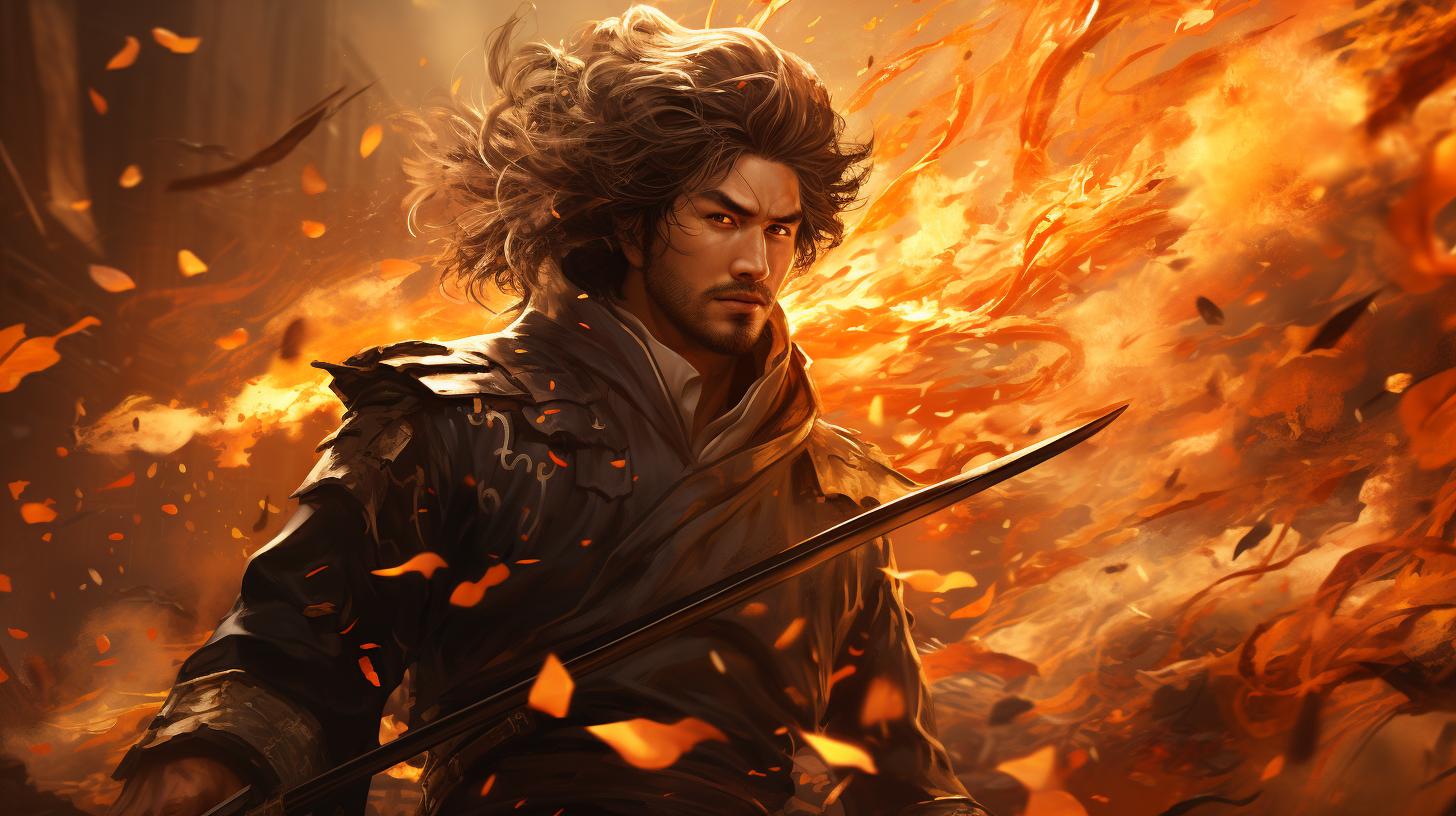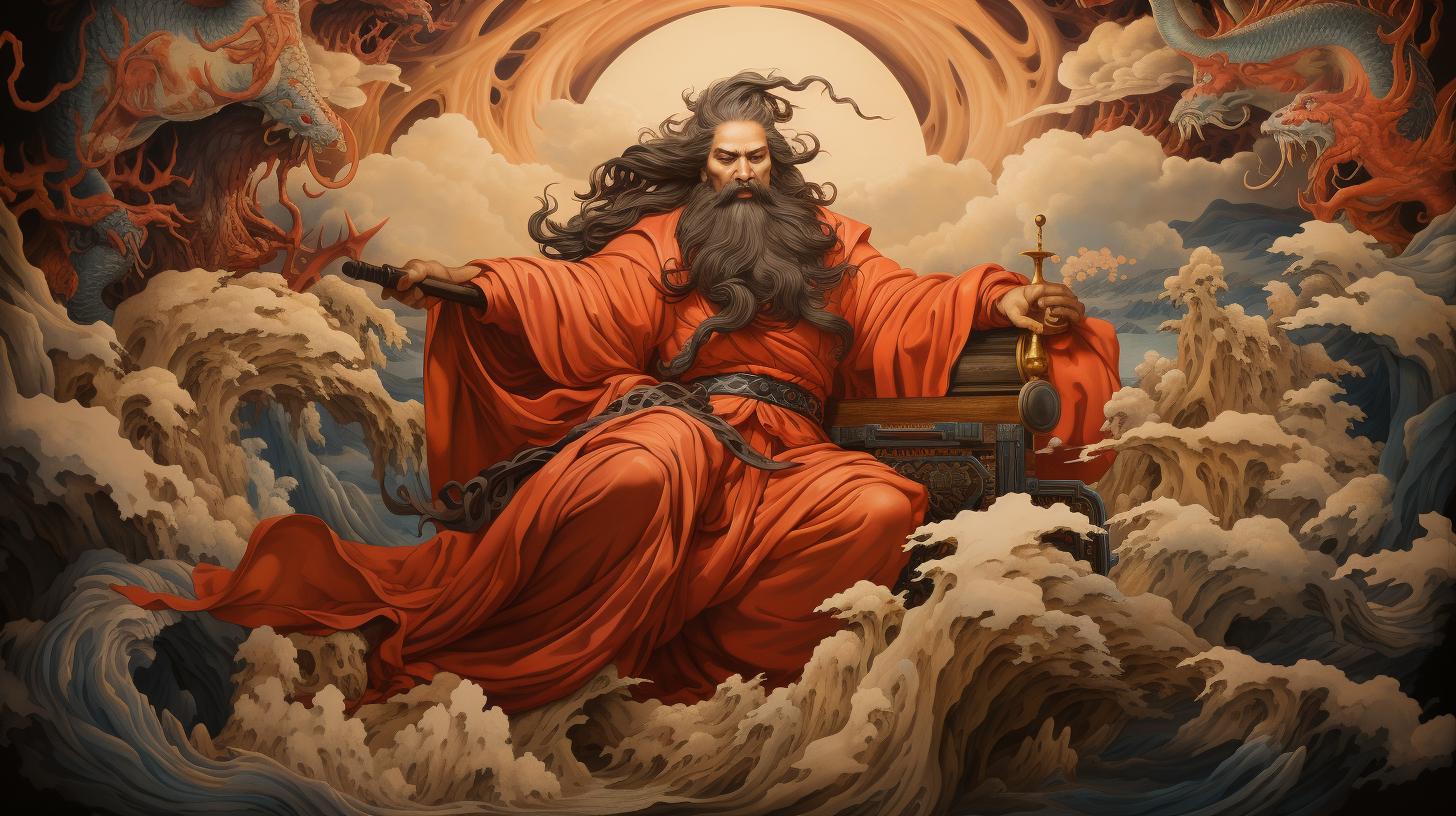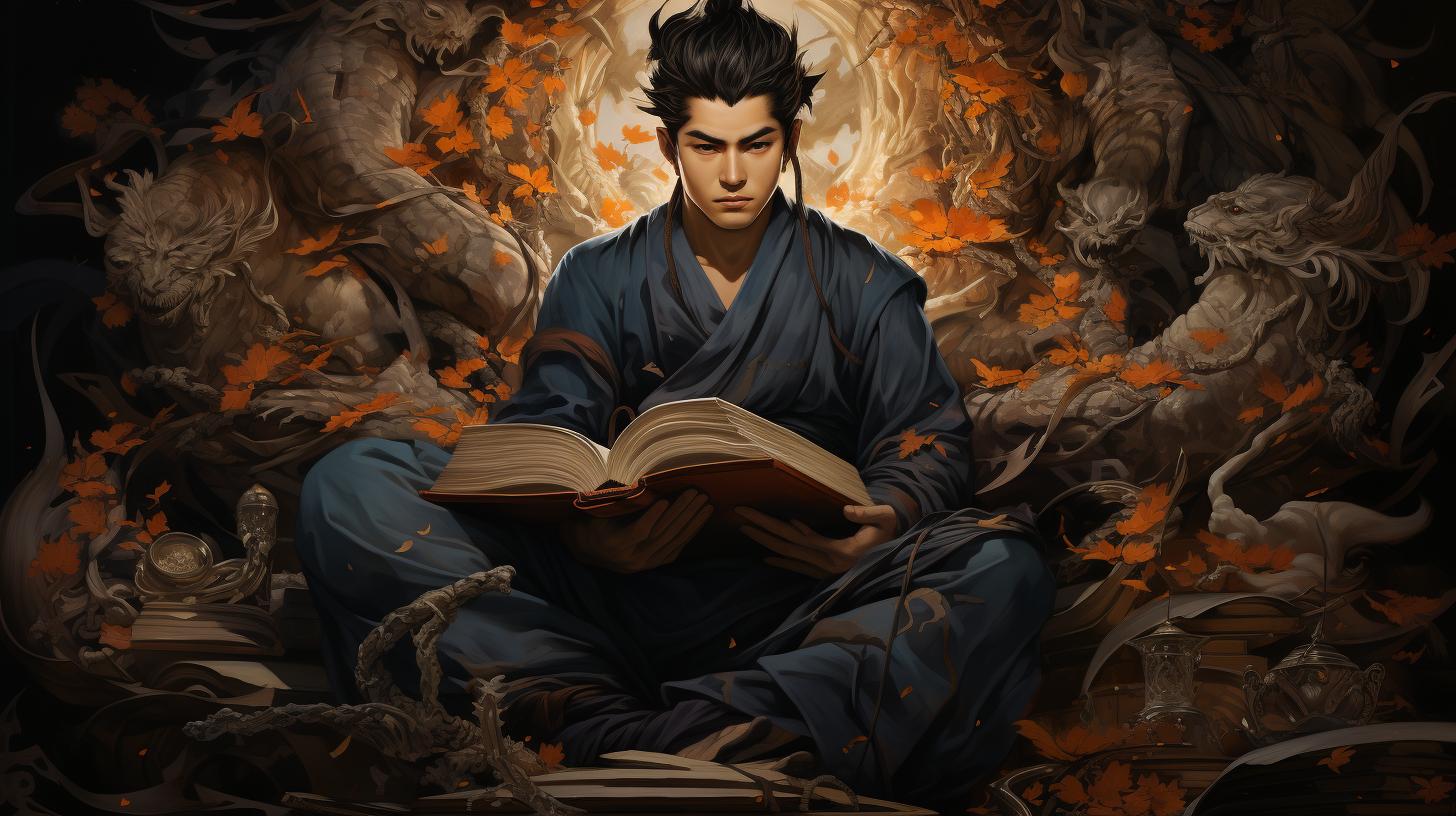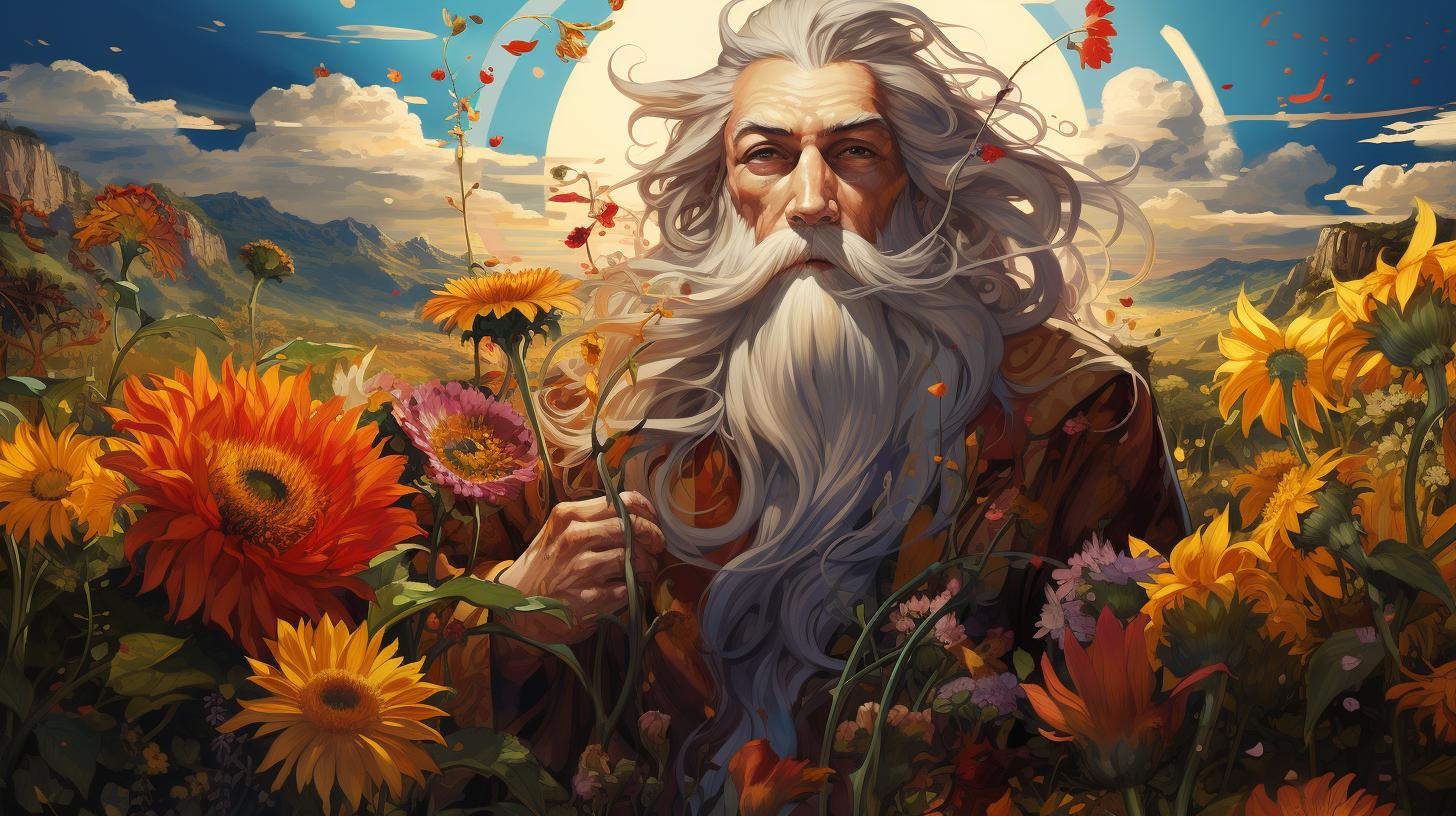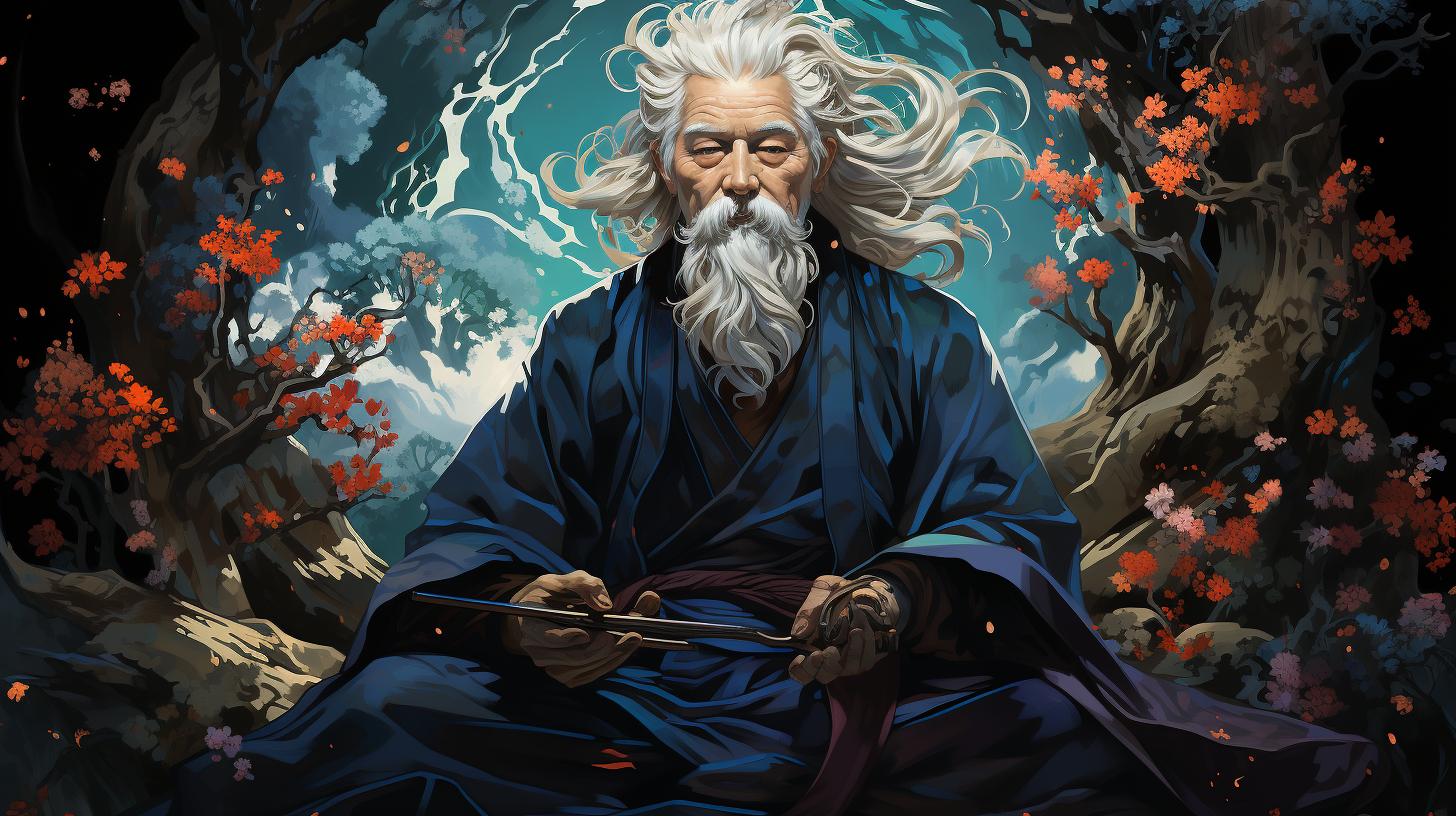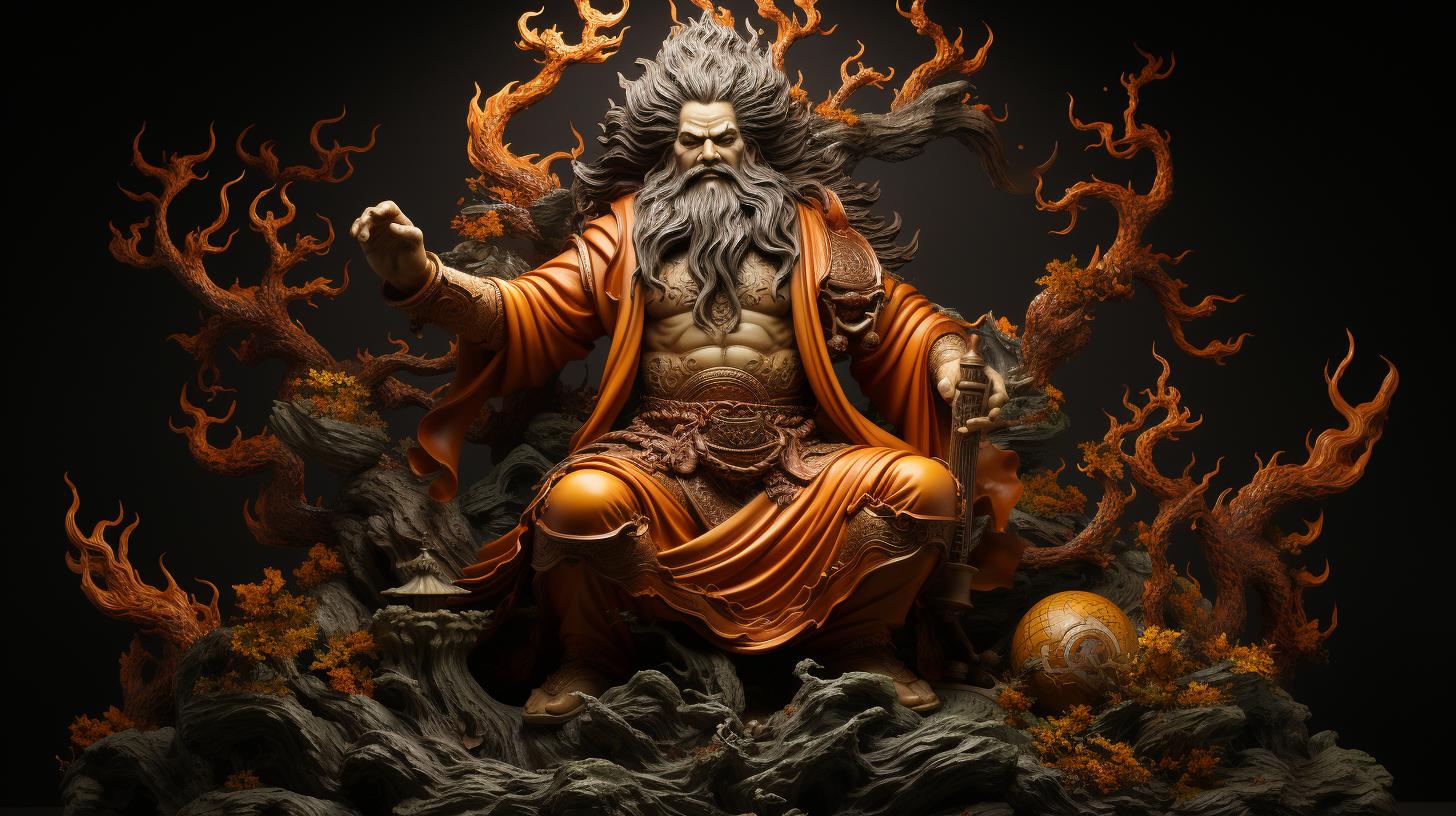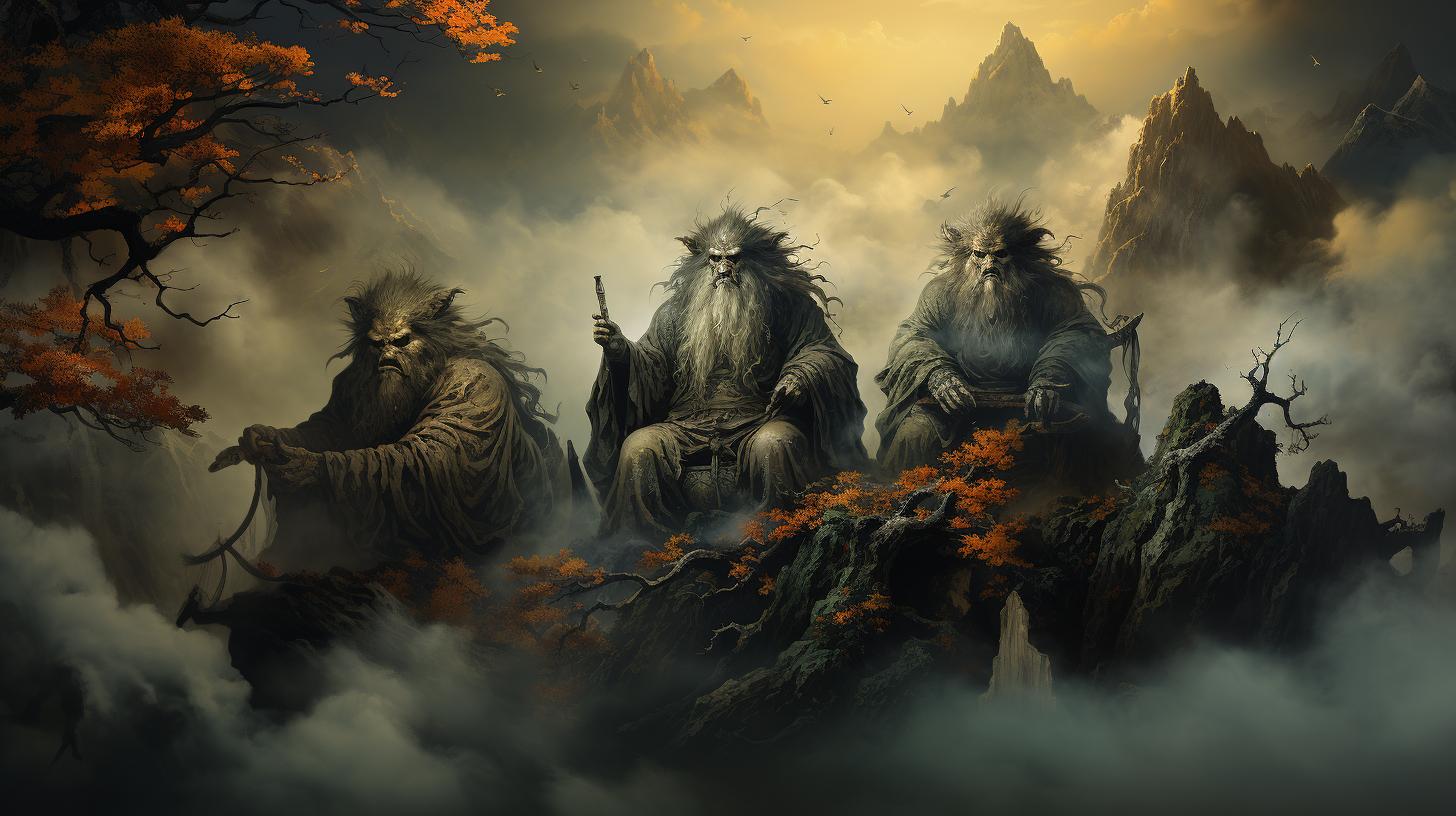Discovering the Wonders of Jurojin – The Japanese God of Longevity
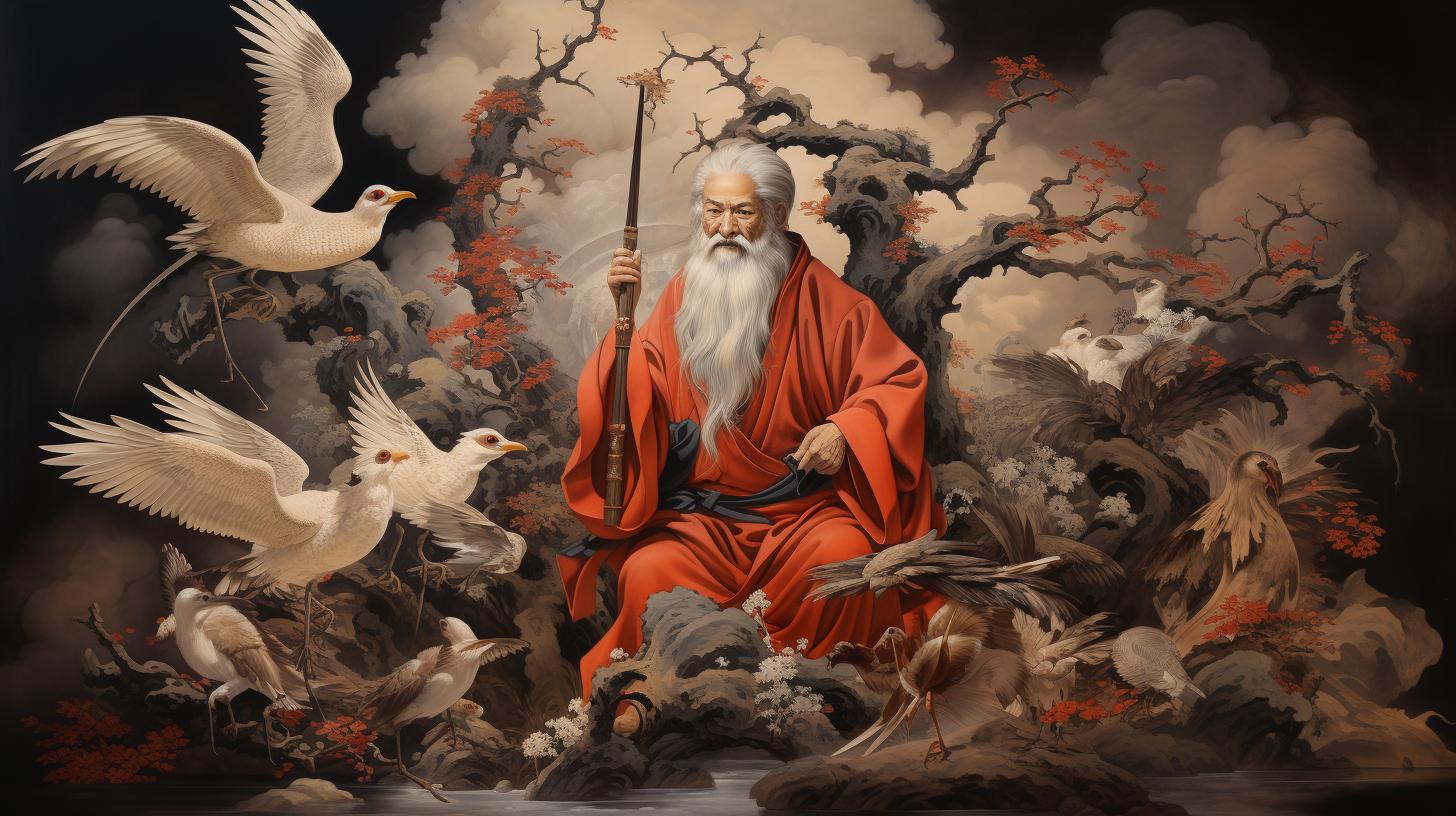
Jurōjin, the Japanese god of longevity, is considered one of Japan’s most beloved and fascinating deities. Depicted as an old man carrying a staff with a variety of animals at his side, Jurōjin is portrayed throughout Japanese art and religion as a symbol of good fortune and wisdom.
This article will explore the background, depiction, and cultural significance of this beloved deity, as well as his connection to the seven lucky gods, including Fukurokuju.
Understanding Jurojin, the Japanese God of Longevity
Jurōjin, the Japanese god of longevity, is a beloved and captivating deity in Shinto and Buddhist traditions. In this section, we will explore the background of Jurōjin’s origin and mythology, as well as his characteristic depiction as an old man with animals.
Additionally, we will delve into the role of Jurōjin in Shinto and Buddhist traditions, highlighting his connection to other deities.
The Background of Jurōjin: Origin and Mythology
Jurōjin’s origin can be traced back to China in the Northern Song Dynasty where he was known as a wise Taoist. After his death, he was deified and merged with elements of Buddhism and historical images.
The combination of these elements resulted in the current depiction of Jurōjin as an old man with a staff, accompanying animals, and his distinctive smile. He is said to carry a scroll or sutra that records the lifespan of all things.
This represents his role as the god of longevity and wisdom in Japanese mythology.
Depiction of Jurōjin: the Old Man with Animals
Jurōjin is commonly depicted as an old man with a short stature of about 90 centimeters, a bald head, a white beard, and a curved back. He carries a staff with a scroll or sutra, which he uses to record the lifespan of all things.
Additionally, he is accompanied by several animals, including a crane, a tortoise, and most notably, a deer. The deer is said to symbolize longevity, good luck, and happiness. Jurōjin is a symbol of good fortune and wisdom, and his depiction in Japanese art and religious traditions is widely appreciated.
The Role of Jurōjin in Shinto and Buddhist Traditions
Jurōjin has a prominent role in both Shinto and Buddhist traditions. In Shintoism, he is considered one of the seven lucky gods, along with his counterpart Fukurokuju. In Buddhist traditions, he is often associated with the deity Amitabha Buddha and is believed to reside in the same body as Fukurokuju.
His role as the god of longevity and wisdom is also reflected in his association with the revered Star of the South Pole, which is believed to guide souls on their journey from this world to the afterlife.
The Seven Lucky Gods and Fukurokuju Another of the Seven
Japan is known for its rich mythology and its pantheon of deities, which includes the Seven Lucky Gods. These gods are a popular subject in Japanese folklore, art, and religious practices.
Among the Seven Lucky Gods is Fukurokuju, the god of happiness and virtue.
Fukurokuju: The God of Happiness and Virtue
Fukurokuju is often depicted with a forehead covered by noble wrinkles, an elongated skull and a thick beard. He carries a staff with a sacred crane resting on it.
He is the only of the Seven Lucky Gods to have originated as Japanese, with his roots in the Taoist god of longevity, the Old Man of the South Pole.
His name is a combination of three different gods’ names: fuku meaning luck or fortune, roku meaning wisdom, and ju meaning longevity. Together, they represent a harmonious blend of good luck, intelligence, and long life.
The Other Seven Lucky Gods of Japan
The remaining Six of the Seven Lucky Gods are of Chinese and Indian origin and were adopted into Japanese culture during the Edo period (1603-1868). Here is a brief overview of each:
- Ebisu: the god of fishermen and luck in business
- Daikokuten: the god of agriculture and prosperity
- Bishamonten: the god of warriors and protector of the Buddhist faith
- Benzaiten: the goddess of knowledge, art, and beauty
- Hotei: the god of happiness and good fortune
- Jurōjin: the god of longevity, known for his association with Fukurokuju, and who is the only one of the Seven Lucky Gods to originate from Japan
Inhabit the Same Body: Jurōjin, Fukurokuju, and their Background
According to Japanese mythology, Fukurokuju and Jurōjin both inhabit the same body, along with several other deities.
Fukurokuju is said to represent the upper half of the body, while Jurōjin represents the lower half. Together, they embody the idea of longevity and happiness. Their shared Taoist and Buddhist origins, coupled with their adoption into Japanese folklore, make them popular figures in Japanese art and culture.
The Seven Lucky Gods, including Fukurokuju and Jurōjin, are often associated with the Japanese New Year, with symbolic items such as hats and banners bearing their images appearing in many homes and businesses.
In conclusion, the Seven Lucky Gods, including Fukurokuju, play an important role in Japanese mythology and culture. These deities represent a blend of eastern religious traditions and have become an integral part of Japanese folklore and daily life.
Significance of Jurojin in Japanese Art and Popular Culture
Jurojin, the Japanese god of longevity, has been an important figure in Japanese culture for centuries. His representation as an old man with a staff and accompanied by animals has been a popular theme in Japanese art and architecture.
Jurojin is also known for his association with good luck and wisdom, making him a popular figure in contemporary pop culture.
Depiction of Jurojin in Japanese Art and Architecture
Jurojin’s depiction in Japanese art and architecture often showcases his role as the god of longevity. One popular representation is through the shichifukujin, a group of seven gods who represent luck and fortune in Japanese culture.
Jurojin is often depicted alongside the other six gods, sitting on a white deer with his staff, a tortoise, and a scroll in his hands. He is also often depicted in statues, paintings and other works of art to bring longevity to individuals, families, and businesses.
Jurojin in Contemporary Pop Culture and Entertainment
Jurojin’s popularity in contemporary pop culture can be seen in various forms such as TV shows, anime, manga, video games, and music. For instance, in the famous anime series Dragon Ball Z, there is a character named Karin who is based on Jurojin, as he is depicted living on a tower and drinking a special fluid that gives him a long life.
Jurojin has also been included in various video games as a playable character or as a mythological reference. Additionally, Jurojin is often referenced in J-Pop, and J-Rock music, as his themes of longevity, wisdom, and good luck remain relevant today.
The Symbolism behind Jurojin’s Wisdom and Longevity
Jurojin’s association with wisdom and longevity stems from his role in the creation of the world and the divine knowledge he possesses. He is often depicted carrying a scroll which represents his knowledge and ability to foretell an individual’s lifespan.
Moreover, his association with the tortoise and the crane represent a long life and good fortune, respectively. In Japanese culture, the tortoise is believed to live for thousands of years, while the crane is considered an auspicious bird- known to bring good fortune and happiness.
Hence, Jurojin’s representation with these animals is a symbol of his ability to bring longevity and good luck to those who seek it. In conclusion, Jurojin’s influence in Japanese art, pop culture and beliefs is still felt today.
His importance as the god of longevity, wisdom, and good fortune has made him an essential figure in Japanese culture. Whether represented through J-Pop music or anime, Jurojin’s legacy continues to inspire and bring hope and positivity.
…

